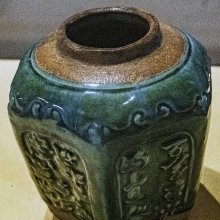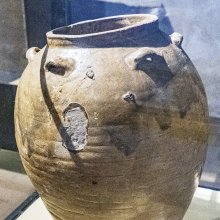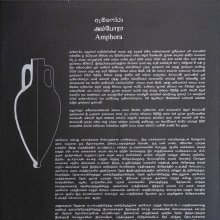Samayata, Samāyāta, Samāyata: 7 definitions
Introduction:
Samayata means something in Hinduism, Sanskrit, Buddhism, Pali. If you want to know the exact meaning, history, etymology or English translation of this term then check out the descriptions on this page. Add your comment or reference to a book if you want to contribute to this summary article.
Images (photo gallery)
In Hinduism
Purana and Itihasa (epic history)
Source: archive.org: Shiva Purana - English TranslationSamāyāta (समायात) refers to “(having) come near (someone)”, according to the Śivapurāṇa 2.3.24 (“Śiva consents to marry Pārvatī”).—Accordingly, as Śiva said to the Gods and others: “O great gods, Viṣṇu, Brahmā and others, why have you come [i.e., samāyāta] near me? Mention the reason for the same”.

The Purana (पुराण, purāṇas) refers to Sanskrit literature preserving ancient India’s vast cultural history, including historical legends, religious ceremonies, various arts and sciences. The eighteen mahapuranas total over 400,000 shlokas (metrical couplets) and date to at least several centuries BCE.
Languages of India and abroad
Pali-English dictionary
Source: BuddhaSasana: Concise Pali-English Dictionarysamāyāta : (pp. of samāyāti) came together.

Pali is the language of the Tipiṭaka, which is the sacred canon of Theravāda Buddhism and contains much of the Buddha’s speech. Closeley related to Sanskrit, both languages are used interchangeably between religions.
Sanskrit dictionary
Source: DDSA: The practical Sanskrit-English dictionarySamāyata (समायत).—p. p. Drawn out, extended, lengthened.
--- OR ---
Samāyāta (समायात).—p. p.
1) Come together.
2) Returned.
Source: Cologne Digital Sanskrit Dictionaries: Shabda-Sagara Sanskrit-English DictionarySamāyata (समायत).—mfn.
(-taḥ-tā-taṃ) Lengthened, extended. E. sam and āṅ before yam to restrain, kta aff.
--- OR ---
Samāyāta (समायात).—mfn.
(-taḥ-tā-taṃ) Come, arrived. E. sam and āṅ before yā to go, kta aff.
Source: Cologne Digital Sanskrit Dictionaries: Monier-Williams Sanskrit-English Dictionary1) Samāyata (समायत):—[=sam-āyata] [from samā-yam] mfn. drawn out, lengthened, extended, long, [Mahābhārata]
2) Samāyāta (समायात):—[=sam-āyāta] [from samā-yā] mfn. come together or near etc.
3) [v.s. ...] returned, [Hemādri’s Caturvarga-cintāmaṇi]
Source: Cologne Digital Sanskrit Dictionaries: Yates Sanskrit-English Dictionary1) Samāyata (समायत):—[samā+yata] (taḥ-tā-taṃ) p. Extended.
2) Samāyāta (समायात):—[samā+yāta] (taḥ-tā-taṃ) p. Arrived.
Source: DDSA: Paia-sadda-mahannavo; a comprehensive Prakrit Hindi dictionary (S)Samāyāta (समायात) in the Sanskrit language is related to the Prakrit word: Samāyāya.
Sanskrit, also spelled संस्कृतम् (saṃskṛtam), is an ancient language of India commonly seen as the grandmother of the Indo-European language family (even English!). Closely allied with Prakrit and Pali, Sanskrit is more exhaustive in both grammar and terms and has the most extensive collection of literature in the world, greatly surpassing its sister-languages Greek and Latin.
See also (Relevant definitions)
Partial matches: Ayata, Sam, Cam.
Starts with: Samayatantra, Samayatara.
Query error!
Full-text: Komkara, Avasara, Samayaya, Ullapanaka, Utthapana, Samaya, Vara, Ya.
Relevant text
Search found 11 books and stories containing Samayata, Sam-ayata, Sam-āyata, Sam-āyāta, Samāyāta, Samāyata; (plurals include: Samayatas, ayatas, āyatas, āyātas, Samāyātas, Samāyatas). You can also click to the full overview containing English textual excerpts. Below are direct links for the most relevant articles:
Ganitatilaka (Sanskrit text and English introduction) (by H. R. Kapadia)
Page 165 < [Sanskrit Text of the Ganitatilaka]
Notices of Sanskrit Manuscripts (by Rajendralala Mitra)
The body in early Hatha Yoga (by Ruth Westoby)
International Ayurvedic Medical Journal
Yogic life style and geriatric care- a review article < [2017, Issue I January,]
A conceptual review work on the treatment of kaphaj prameha in ayurveda < [2022, Issue 3, March]
Elephantology and its Ancient Sanskrit Sources (by Geetha N.)
Ayurvedic Principles for Holistic Health: A Complete Guide < [Volume 11, Issue 3: May-June 2024]
Clinical aspect of guna siddhanta with special reference to trisutra ayurveda < [Volume 6, Issue 5: September-October 2019]


